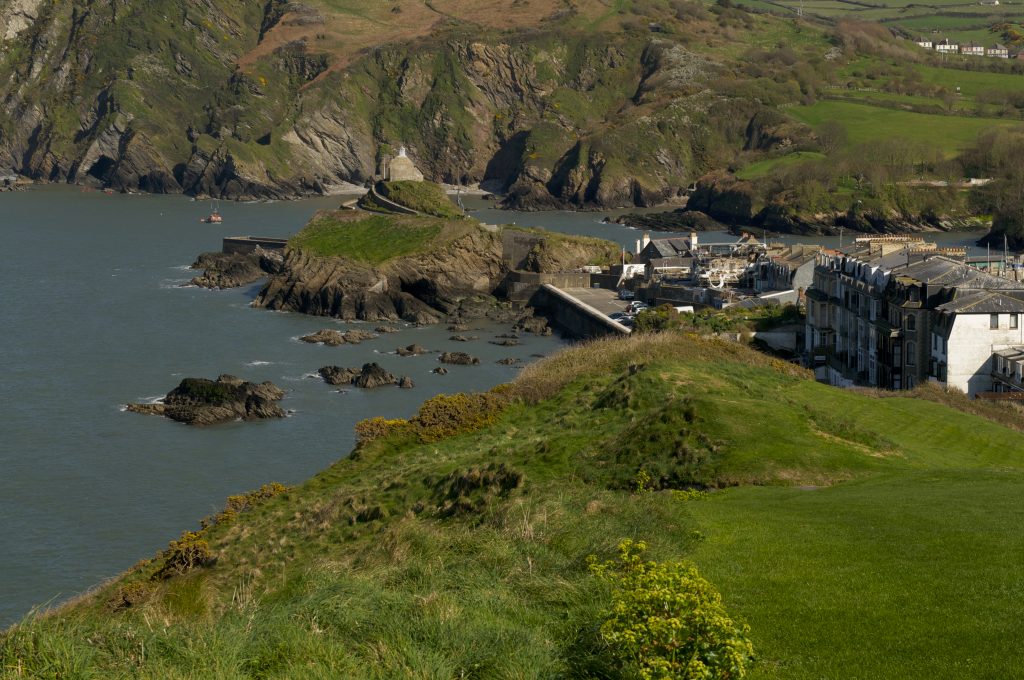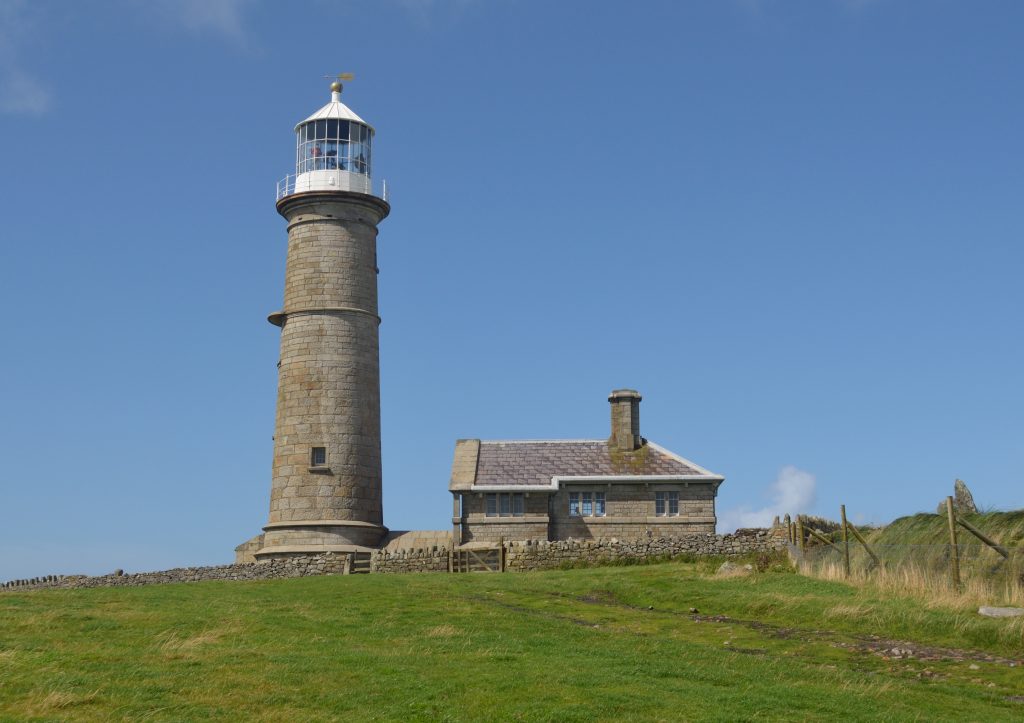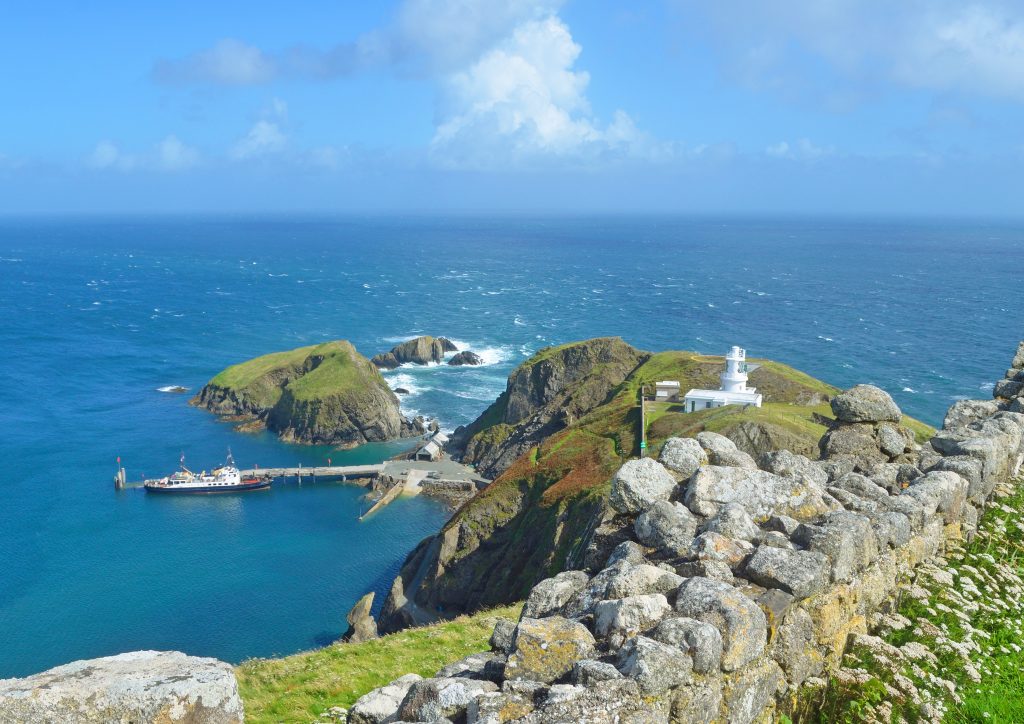Lundy Island
Key information: Lundy Island 
- This famous island-reserve has fabulous land and sea life, huge cliffs and stunning views.
Walkopedia rating
- Walkopedia rating87.5
- Beauty31
- Natural interest15.5
- Human interest11
- Charisma30
- Negative points0
- Total rating87.5
Vital Statistics
- Length: Up to 11km
- Maximum Altitude: N/A
- Level of Difficulty: Moderate

WALK SUMMARY
Magnificent Lundy Island sits some 12 miles off the north-west coast of Devon. It is a nature reserve and famous for seabirds (you will see puffins, razorbills and guillemots at the right time of year), with huge 400ft cliffs above an often violent sea which was Britain's first marine nature reserve - you will be likely to see seals. Its exposed west has its toughest cliffs, while its (relatively) sheltered eastern side is (relatively) mellower, with trees even.
Lundy has been inhabited for more than 3,000 years – its name derives from the Norse for Puffin Island – and was subsequently a base for marauders and smugglers, as well as a fortified outpost commanding the Bristol channel. It is home to a castle (of sorts) and old batteries. It exported granite far and wide; a spectacular track which snakes along the mid-cliffs of the eastern shore, was once a railway line for this purpose.
Other wildlife includes ravens, falcons and sika deer. Soay sheep and highland cattle are also to be seen.
Lundy is plateau-topped, and easy walking. At some 3 miles long and 1/2 mile wide at most, it is easily walked around on a 11km (7 miles) circuit. (Half circuit 7.4km/4.5 miles.) That said, on a day trip from Ilfracombe, you will struggle to take a leisurely, viewing-intensive walk and cover the whole island; consider staying a night or more, so you can explore Lundy’s magical landscape at leisure.
On a day visit, you will want to walk along both east coast (on the brilliant cliff path) and the wild west, allowing time for a picnic and regular viewing-stops. The Old Lighthouse shouldn’t be missed, nor the village or castle (although we did miss both!). Given these needs and the short visiting time (see below), you will do well to get beyond the half way wall. The plateau on top is, dare one say, quite dull; it is surprising how quickly you can have no sense you are near the sea.
Access is by boat, mainly from Ilfracombe and some from Bideford (all 2hrs each way) - check sailing times as these vary (and indeed don’t run in bad weather). (Once a day, 10am returning 4,30ish from/to Ilfracombe, summer timing 2019.)
Lundy is managed by the Landmark Trust, and varied accommodation is available. See www.landmarktrust.org.uk. See also www.lundyisland.co.uk
The crossings can be rough, so use seasickness pills if you are susceptible.
Much of the coast is cliffs, not all of them 100% stable. If in doubt, stick to the paths.
South West Coast Path: Minehead to Padstow (National Trail Guides) – Roland Tarr /Aurum Press Ltd. Has a section on walking on Lundy.
Visitors are at their peaks in high summer, although limited ferry spaces keep a lid on numbers. The best time of year can be May and June, when the wildflowers are at their heart-melting best and the days are long. The Puffins leave at the end of July, indeed, July is a down month for wildlife. But be prepared for bad weather at any time. Autumn and winter walks can be thrilling – and relatively alone. Hardy types who like a good sea-storm will probably get a kick out of Winter, bearing the short daylight hours in mind.
Please help us by making suggestions and sending photos! Thank you!
WILLIAM MACKESY'S ACCOUNT
of this walk
The crossing out was rough, a smallish boat tossing and [yawing] into post-storm waves, and I have to admit that I was sick as the proverbial parrot. And, some of it ended up on my pack (don't ask), which followed me fragrantly around the island all day. Good thing it was blowing hard...
I'm not normally susceptible.
As day visitors needing to get the return ferry, we had limited time, so from the jetty in the far south-east, we did the following.
We climbed the well-walked track from the jetty to the village some 100m above.
And then across the.....
READ MOREOther accounts: share your experiences
Your comments on this walk, your experiences and suggestions, and your photos are very welcome. Where appropriate, you will be credited for your contribution.

Safety and problems: All walks have inherent risks and potential problems, and many of the walks featured on this website involve significant risks, dangers and problems. Problems of any sort can arise on any walk. This website does not purport to identify any (or all) actual or potential risks, dangers and problems that may relate to any particular walk.
Any person who is considering undertaking this walk should do careful research and make their own assessment of the risks, dangers and possible problems involved. They should also go to “Important information” for further important information.

Anyone planning an expedition to this place should see further important information about this walk.
Responsible travel matters, a lot. How you travel will make a real difference - for better or worse. PLEASE consider this when making plans. Read more






